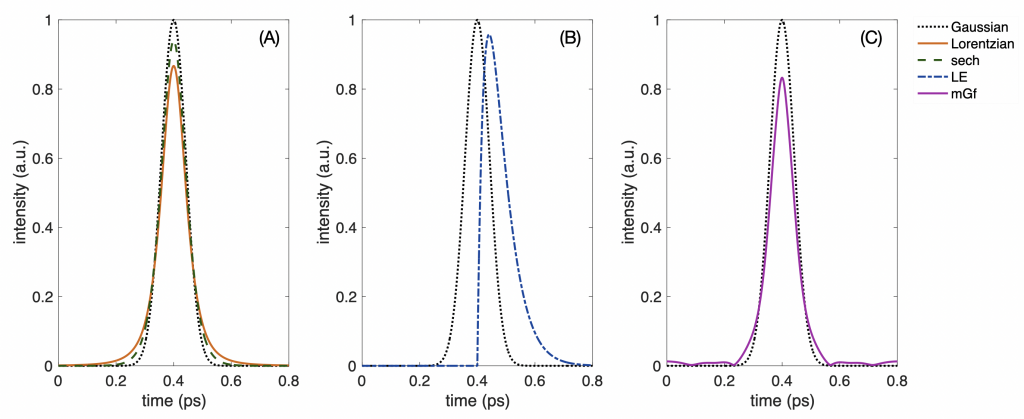By: Eunice Jean Patron
While existing research on material properties rarely examines changes in laser pulses, or the flashes of laser lights, over time, scientists from the University of the Philippines – Diliman College of Science (UPD-CS) approached laser exploration differently by investigating how non-Gaussian lasers affect the diffusion of heat in metals.

In their recent study, Jenny Lou Sagisi and Dr. Lean Dasallas of the UPD-CS Materials Science and Engineering Program (UPD-CS MSEP), along with Dr. Wilson Garcia of the UPD-CS National Institute of Physics (UPD-CS NIP), investigated the effects of different temporal laser source terms (TLSTs), or shapes of the laser pulses, on simulating heat diffusion in metals.
Validating Gaussian Assumptions in Studies
Dr. Dasallas explained that scientists often assume laser pulses to light up in a bell-shaped curve (known as Gaussian): “Dim at first, but slowly brightening until it becomes super bright in a very short time, before dimming again,” he further expounded. This assumption is common and accepted in laser research due to the laser pulse’s duration, which is one quadrillionth (10-15) of a second.
Simulations conducted by the scientists to compare the differences between Gaussian-shaped and non-Gaussian-shaped laser pulses showed that the rough edges on a non-Gaussian laser pulse make it difficult for the laser to vaporize the metal. They also noted that consecutively using laser pulses shows effects on metals that are not as distinct as those seen with Gaussian-shaped laser pulses.

“We were curious to see if there are any changes in the laser pulse’s effect on heat diffusion in metals when they are not Gaussian-shaped,” Dr. Dasallas shared. “Through our computer simulations, we were able to validate that assuming a Gaussian-shaped laser pulse has a basis. It also turns out that the shape of the laser pulses won’t matter if there are many of them.”
Implications in Industry
According to the researchers, exploring the effects of non-Gaussian laser pulses is vital for optimizing laser processing methods in more precise applications such as micro- or nano-machining, surface modification, and nanoparticle generation. Becoming more acquainted with non-Gaussian-based lasers also allows for more options and tools in laser material processing.
Extending this work to other materials, such as semiconductors, polymers, and insulators, would be very interesting. We plan to continue improving our understanding of complex laser-material interactions, which could involve experimental, theoretical, or computational approaches,” Dr. Dasallas said as he shared their team’s goals for research on laser-based material processing. “The laser industry is now worth billions of dollars. Various technologies already employ lasers, and the Philippines is catching up with these technologies.”
For interview requests and other concerns, please contact [email protected].
References:
Sagisi, J. L., Garcia, W. O., & Dasallas, L. L. (2024). Modification of the temporal laser source term in two-temperature model. Numerical Heat Transfer, Part A: Applications, 1-18. https://doi.org/10.1080/10407782.2024.2350687
